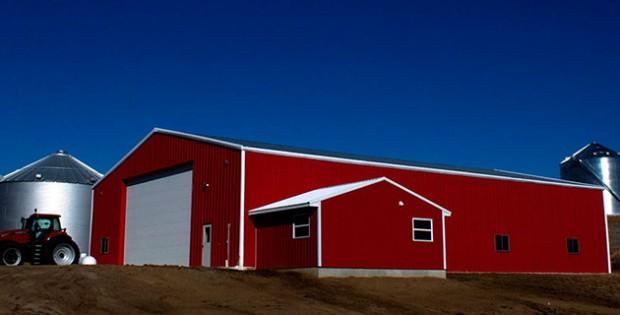Will Your Steel Garage Hold Up Against Strong Winds?

Wind can be fun. Put yourself in your favorite convertible for a moment. You’re driving down the highway with the top down and the wind through your hair. Sounds like fun, right?
It’s not fun when winds get destructive. In some parts of the country, hurricanes and devastating winds have the potential to cause significant damage to your property. One of the biggest advantages to steel buildings is their durability and capability to withstand strong winds. But the proof is in the engineering of each building.
Steel garage doors could be susceptible to damage from a wind event that is much stronger than what the building was designed for. Armstrong Building Systems rarely, if ever fail because our in-house detailers and designers work with project managers to determine correct wind loads for each building as well as the selection of the buildings’ accessories. We take great pride in being detail-oriented to prevent building failures.
As an important building element, garage doors are required to withstand wind speed and velocities in accordance with certain codes. Because different parts of the U.S. experience different weather patterns, steel garages have different Exposure ratings. According to the National Institute of Building Sciences, Exposure refers to the characteristics of the ground roughness and surface irregularities in the vicinity of a building, which influences its wind load. In layman’s terms, wind exposure is the rating in the building code that accounts for wind pressure on a building due to geographical location. That led the American Society of Civil Engineers to come up with three different types of Exposure categories:
- Exposure B
- Exposure C
- Exposure D
Exposure B refers to urban and suburban areas, wooded areas or other environments with closely spaced buildings, usually the size of single family dwellings or larger.
Exposure C indicates open areas with scattered structures and heights of less than 30 feet. This includes the open countryside and shorelines in hurricane prone areas, flat open country and grasslands.
Exposure D refers to flat, unobstructed areas and water surfaces. This exposure category includes smooth mud flats, salt flats and unbroken ice.
Depending on where you live, check with your local and state governments and ask about your steel garage’s wind Exposure rating. If you know you live in an area with high winds, tell your project manager in the design phase of your building. They will be able to create a proposal that best fits your needs, and keeps your steel garage safe and secure all year long.
« 6 Ways to Take Your Small Business to the Next Level
The Direct Buy Process: What are Approval Drawings? »
Popular Posts

I’ve seen steel buildings increase in popularity every day because builders use these durable, versatile and flexible construction solutions in every application. Not only have homeowners utilized a steel building for residential purposes, but builders have also made additions to their existing property. No doubt that a steel building garage will increase the value of a home, …
Will Adding a Steel Building Increase My Property Value? Read More »

What is the first step of a steel building project, or any construction project for that matter? After you decide to add a new garage, agricultural or commercial building to your property, you’ll most likely start contacting steel building manufacturers for steel building quotes. From there, you can create a timeline for yourself and develop …
Steel Building Quotes: Get a Grasp on Prices and Estimates Read More »

